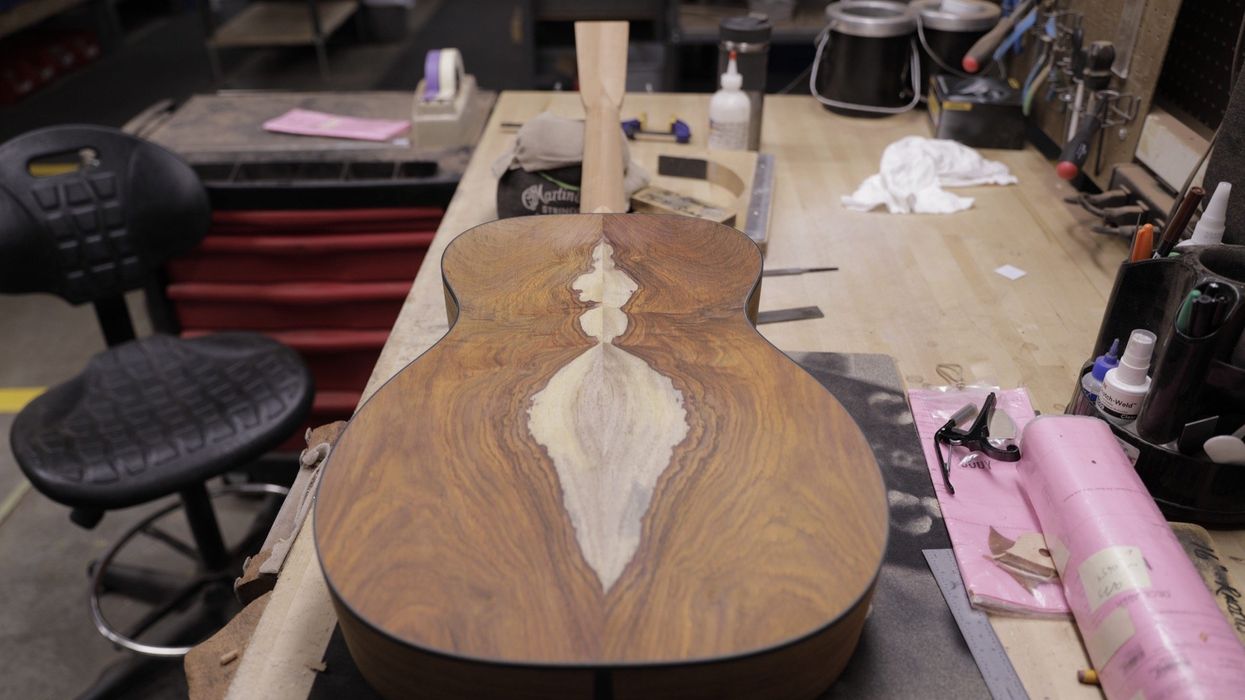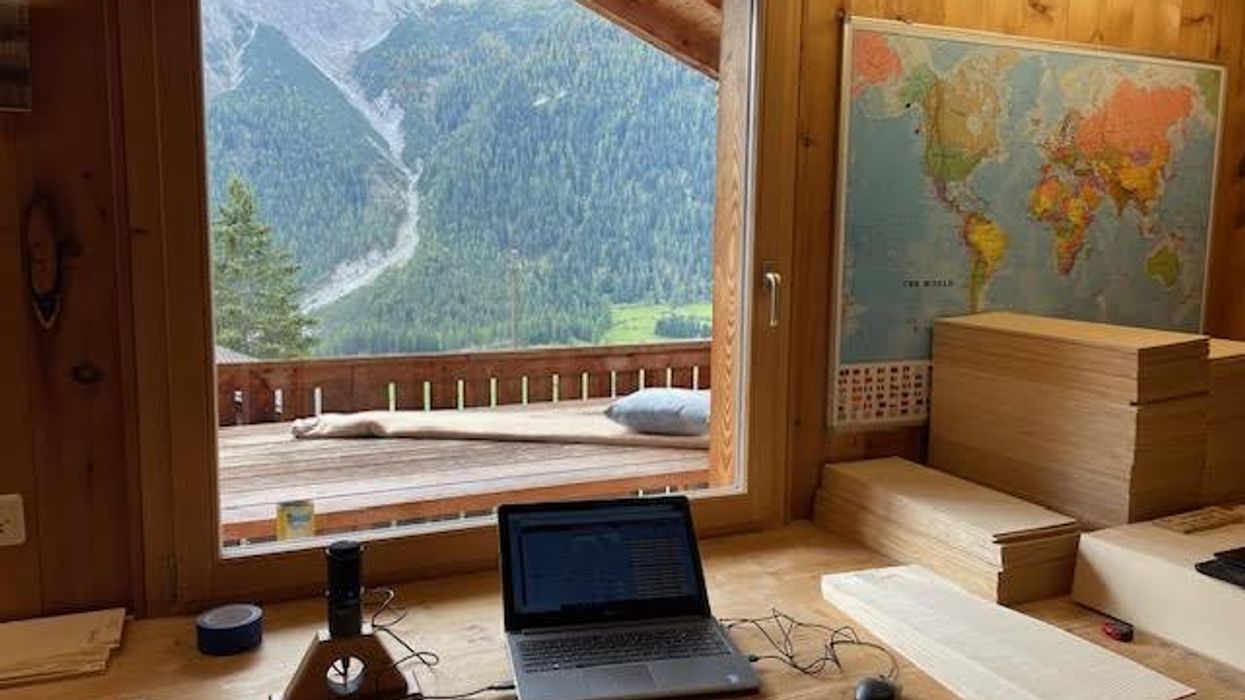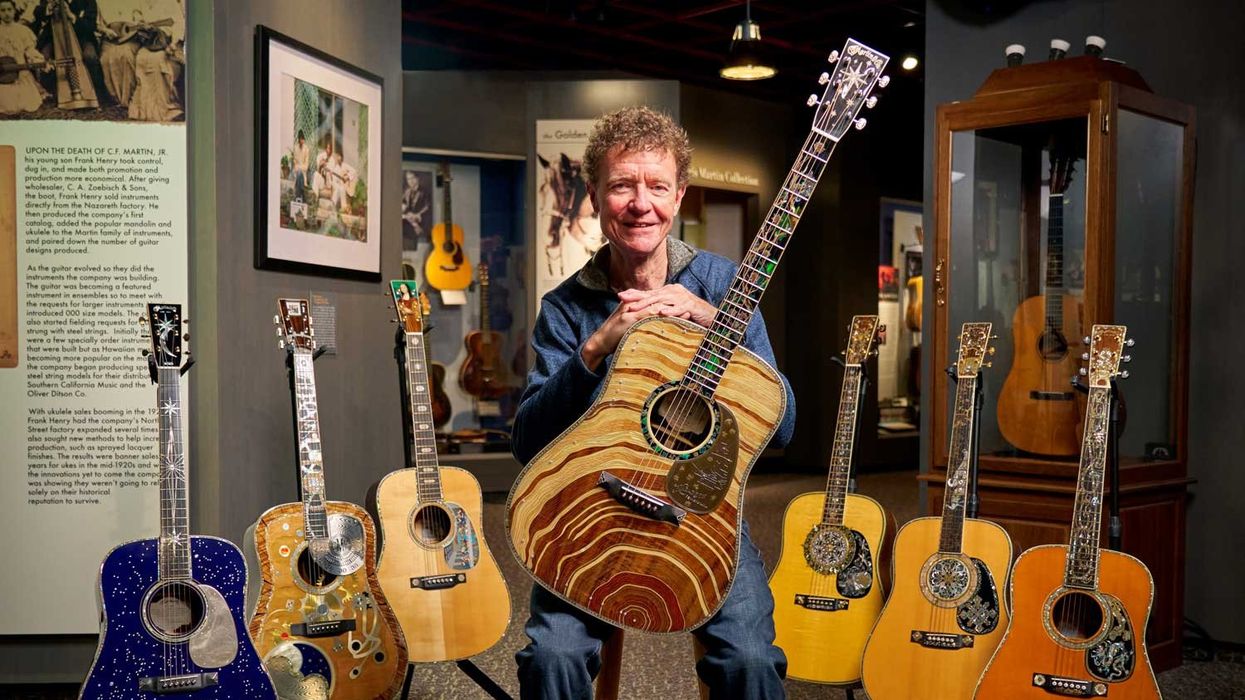Someone—the historical record is unsure exactly who—once opined that writing about music is the same as dancing about architecture. The speaker saw little value in trying to formally analyze or describe a piece of music, an art form so inherently personal and subjective. I might also find it hard to communicate to someone what makes a musical work exciting to me, but when it comes to guitar tone, this is exactly my job at Acoustic Music Works. Whether it’s over the phone or in copy on our website, I’m called upon daily to put the tonal attributes of a particular instrument into words.
It got me thinking: Why don’t I contact some of my luthier friends and industry colleagues to see if there are common threads in how we talk about acoustic guitar tone? It turns out that many of us are speaking a similar language when we discuss what we’re hearing, with many adjectives and buzzwords cropping up again and again.
Trevor Healy of Healy Guitars told me he finds himself using a wide variety of descriptors while communicating in his work, including “sparkle,” “headroom,” “compression,” “body,” and “roundness.” Trevor’s preference is for terms that can somehow be objectively measured, like those pertaining to sustain and EQ. In the end, he relies on customer input, asking them, “How does it make you feel?”
“Every great cello in the world is made of maple. Have you ever heard a bright cello?”—Dana Bourgeois
Brian Dickel, who took over for Jeff Huss when he retired from Huss & Dalton, prefers to keep it simple. “I think descriptors that convey tone in general terms that are easy to interpret such as thin, muddy, dark, warm, etc. work universally better than more flowery language,” he told me. Brian says that “woody,” “warm,” and “balanced” come up most often, and these reflect the tonal profile that he tries to impart into Huss & Dalton guitars.
I’ve always marveled at Chuck Baleno’s scientific approach to voicing, relying on the study of frequencies to dial in a consistently strong sound in his flattop guitars. Baleno says, “I will use ‘tight,’ ‘loose,’ and ‘resonant pitch’ related to frequencies in Hz. Resonant pitch is the main top resonant frequency, found by doing spectrum audio analysis. A tight guitar is in the higher range of frequencies. This will cut through in a band setting, and have strong projection. A loose guitar would be in the lower range of frequencies, and typically has a stronger bass. Obviously, we want the best of both!”
“In the end, he relies on customer input, asking them, ‘How does it make you feel?’”
Certain tone woods almost always prompt the same descriptors. Rosewood is “lush” and mahogany is “woody.” These descriptors can spark deeper conversations, and both are usually considered complementary. Maple, though, is frequently tagged with “bright,” which can be read as vaguely pejorative, and an opinion often issued before the guitar is even played or heard. Here, the wood’s pale appearance might be creating some negative association that can be hard for certain players to overcome. Staining the wood a darker color can flip the mental switch for some skeptics, but as a lover of maple guitars, I prefer Dana Bourgeois’ insight: “Every great cello in the world is made of maple. Have you ever heard a bright cello?”
These luthiers and I are mostly simpatico on the meaning of many tonal descriptors, and it makes me think that a kind of common language has started to naturally develop on the subject. Sometimes, though, enthusiasm for an instrument’s sound can be successfully communicated in a more unusual way. Steve Miklas, owner of Acoustic Music Works, tells of a particular Huss & Dalton CM—made with cedar over koa—which had a tonal profile that he found difficult to put into words. Online, Miklas listed the requisite specs, and then wrote simply, “This guitar is like Thanksgiving dinner. After playing it, you may need to take a nap!” A customer called almost immediately to say, “When I read that, I knew exactly what you meant! I’ll take it!”
Poetry about luthiery? I don’t think anyone would mind.



















